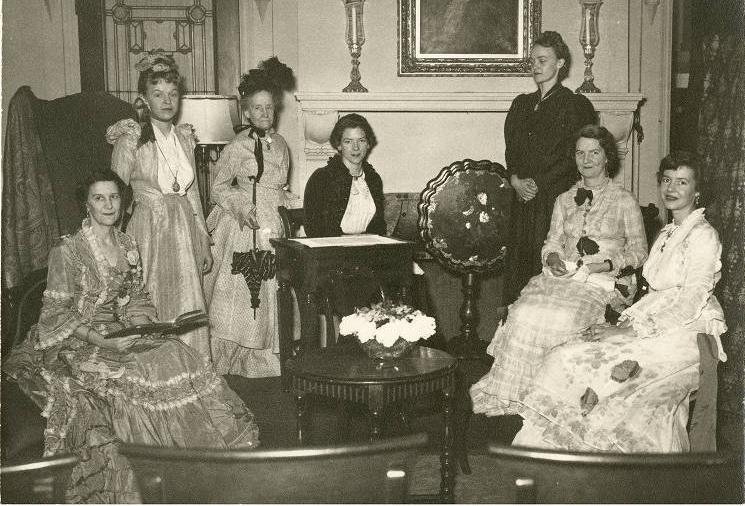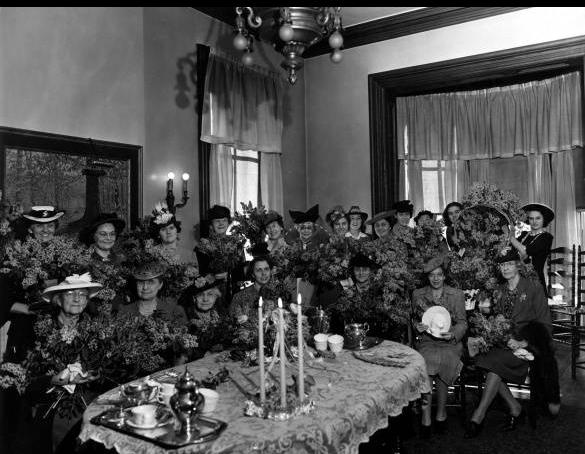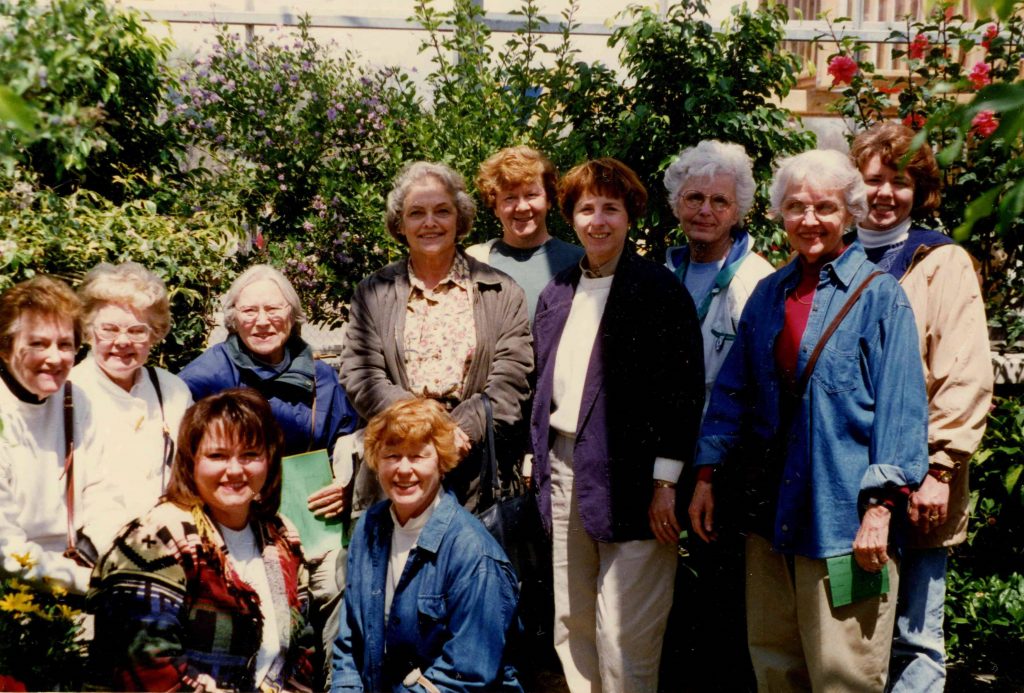The white women’s club movement in Indianapolis closely paralleled the white women’s club movement nationwide. After the Civil War, many women’s organizations emerged, especially in the North and Midwest. The largest and earliest national organization was the (WCTU). Organized in Cleveland in 1873, the WCTU quickly spread throughout the country, including in Indianapolis. The organization was such a strong presence in the city that, in 1879, a plaque was placed in the Indiana State House to commemorate the organization’s President, Frances Willard. In 1875, the was organized to “form an organized center for the mental and social culture of its members, and for the improvement of domestic life.”

In the 1880s, white women’s clubs proliferated. Among early clubs were Fortnightly (founded in 1885), Over the Teacups (1890), and the Club (1885). By 1888, clubwomen organized a corporation known as the to secure a building to serve as “a center of cultivation for the public, and particularly the women of Indianapolis.” A lot was purchased in 1888, and the building was dedicated in 1891. In 1890, Elizabeth Nicholson suggested that the Indianapolis Woman’s Club’s first meeting of the year be followed by a reception for representatives of other women’s literary clubs. Thus began the first state organization of clubs, the Indiana Union of Literary Clubs, which later (1906) consolidated with the Indiana State Federation of Clubs.
This group was the state affiliate of the General Federation of Women’s Clubs (GFWC), the second-largest women’s group in the country after the WCTU. By 1900 the newspapers thought club programs newsworthy enough that they published the entire annual programs of Clio, InterNos, Philomathean, Irvington Fortnightly Club, Magazine Club, Indianapolis Woman’s Club, Research Club, Parlor Club, Fortnightly Literary Club, Irvington Women’s Club, Local Council of Women, Conversation Club, Over the Teacups, Sketching Club, Catharine Merrill Club, and . There was also a very active YWCA in the city, which served Black and white women on a segregated basis. These clubs all enabled women to develop their intellectual abilities and to gain skills in organizing and running meetings, fundraising, and public speaking.
Moving into the 20th century, women’s clubs continued to broaden their scope, following the lead set by the WCTU in the 1880s and 1890s. White women’s GFWC-affiliated clubs worked on community needs around schools, health, welfare, education, and libraries, as well as providing spaces for education and edification for their members. Other organizations–notably the Indiana Women’s Suffrage Association, founded in the 1850s–were also thriving in the early years of the new century. The proliferation of clubs and organizations allowed women to follow diverse interests. An editorial of the period remarked that it has “not been good enough to belong to one club; the argument has apparently been that if one is good, more is better.” The many cross-club memberships allowed women to fulfill their agendas without altering those of the clubs to which they belonged. It also created dense networks of friendships and collaboration, a trend that persisted into the second half of the twentieth century. By 1909 city’s 7th District Federation of Clubs directory listed 83 clubs in alone.

As an increasing number of women began to attend colleges and universities, alumnae associations for women’s colleges were formed, as were sorority alumnae clubs. The Vassar Club was the first to be formed, in 1902, followed by clubs for other women’s colleges and alumnae of coeducational institutions. These clubs have been important for the social life of their members as well as providing support for their institutions. The , formed first in 1909 as the Association of Collegiate Alumni, provided support for education and continued to provide an important forum on education.
An understanding of the breadth of women’s interests can be seen in the organization of the of Indianapolis, founded in 1912. invited some of her friends and the presidents of all clubs in the 7th District Federation to help plan. On February 29, 1912, all members of GFWC-affiliated clubs in Indianapolis were invited to a lunch on the roof garden of the Hume-Mansur Building and nearly 700 responded, 600 of whom became charter members. The constitution stated that the Women’s Department Club’s goal was “to enable the women of Indianapolis, by study, practical work, and united effort, to do their part in promoting spiritual, ethical, artistic and educational growth of their city and in advancing its general welfare.” The original departments of the club, which were renamed and expanded over the years, were Civic, Art, Music, Social Welfare, Education, Home Economics, and Literature. Philanthropic clubs flourished too. Kappa Kappa Kappa was founded in 1901, followed by innumerable other Greek letter groups from all segments of society whose aims were to help deserving girls by giving scholarships and awards.

The ratification of the 19th Amendment gave further impetus to those white women who wanted to devote their energy and expertise to the management of local affairs, at least in a voluntary capacity. The of Indianapolis, organized in 1920 as one of the original city chapters in the nation, presented citizenship schools and studied a host of governmental topics. As late as the late 1970s, the Indianapolis LWV was consulted as experts on issues of local government consolidation and other municipal topics. As soon as it became apparent that the League would not be affiliated with a political party, women organized the Woman’s Democratic Club in 1921 and the 7th District Republican Club in 1922. Not directly involved in the political sector, the was organized in 1921 to promote and to develop the potential for voluntary participation in community affairs. Latreians, dedicated to social service, followed in 1925.
The following decades saw white women organizing to pursue interests closer to home. Beginning in 1929 Marion County Extension Homemakers Clubs began meeting in small neighborhood groups, funded by the U.S. Department of Agriculture. In 1980 there were 96 such clubs with 1,350 members. Garden clubs also proved to be popular. Anna Hosea founded the North End Garden Club in 1928, followed in 1930 by the Indianapolis Garden Club. By 1988 the Central District of the Garden Clubs of Indiana, Inc., could list 35 such organizations in Marion and surrounding counties. Garden clubs have been responsible for beautifying many public areas in the city.

Over the decades, white women formed clubs based on mutual interests and professional affiliations. The object of these organizations was to provide some kind of service either to the community or to their own families. Beginning in the 1950s, some of these groups, such as the League of Women Voters, worked hard to integrate their memberships, although not all clubs took that path. Many, especially the neighborhood clubs, remained segregated as residential segregation persisted.
In 1959, the began publishing a directory of women’s clubs. The 10th edition of that directory appeared October 15, 1978, headed by this observation: “Volunteer efforts are a necessity if the needs of a million plus population are to be met. In recent years activities have become more professional in nature…and many have opened their membership to men.” From Altrusa to Zonta, from 25 chapters of American Business Women Association to Women Lions, Women Rotary, Women’s Council of the , over 170 organizations are listed. This includes, of course, women’s voluntary organizations that assist local hospitals and social service centers and support arts organizations, and women’s groups devoted to political action, especially that concerning women’s rights. The 1988 categorizes these organizations: Support groups, Volunteer, Professional, and Social. Among the social groups listed are Circle City Chapter of Sweet Adelines, Inc., innumerable sororities, hobby groups, and two chapters of the Daughters of the American Revolution.
Women in Indianapolis, from to present-day movers and shakers, have tried to address community problems as they understood them. When, in earlier times, men had all the power to pass laws and to make policy, white women formed clubs to inform and to reinforce one another as they persuaded their husbands and sons to think about issues important to women. They also found niches in which they could perform service to the community. As women gained the vote and an increasing voice in community decisions, they continued to use their club networks to reinforce their volunteer contribution to the well-being of Indianapolis and all its citizens. In the 1960s and 1970s, these networks also became important channels for feminist work. In the mid-1970s, for example, the Mayor’s Office funded a widely-praised rape prevention program called Women Against Rape. Volunteers to staff the rape crisis hotline were solicited through the newsletters of the League of Women Voters and Churchwomen United, as well as explicitly feminist groups like Indianapolis . Throughout the twentieth century, therefore, women’s clubs provided white Indianapolis women with opportunities to improve their city in an amazing variety of ways.

Help improve this entry
Contribute information, offer corrections, suggest images.
You can also recommend new entries related to this topic.